How To Load a Pallet
We have perhaps the biggest news of the year in load planning for you: EasyCargo can load onto pallets! Not only that, we have developed a special algorithm to do so. When loading the same types of items, it works with the specifics of loading onto pallets and manages to make the most of the space while maintaining the load stable. Let’s describe in more detail what this means in practice.
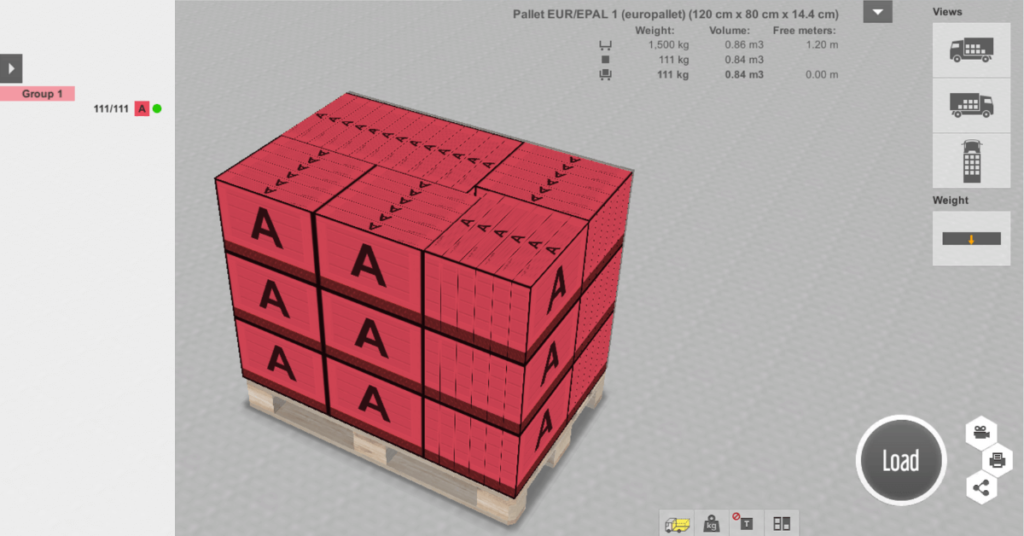
Pallet as a cargo space
In EasyCargo, we have created a pallet as a cargo space – there are standard types of pallets available (such as EPAL 1, 2, 3, 6, or US pallets), which you can add to favorites, customize, or even create completely new ones to your liking.
All of the mentioned can be done on the „Cargo spaces” tab. Clicking on the star in the first column is going to add the pallet to your favorites – in the list of cargo spaces, it will appear at the top so you won’t have to look for it every single time.
The pencil symbol at the right end of the line allows you to edit an already created pallet. If you want to create your own pallet from scratch, simply click the „Create custom cargo space” button in the lower-left corner.
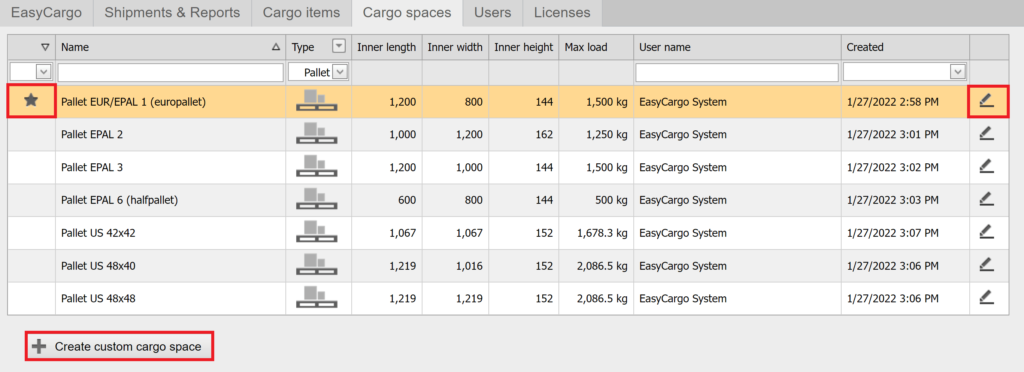
By the way, it’s possible to create overhangs even for a pallet. Find out how here.
A new algorithm for pallet loading
When loading into containers or trucks, the software moves from the front of the space to the back and then gradually fills it up. However, for pallets, such a procedure does not always make sense. Therefore, we have developed a completely new algorithm that can proceed in layers from the bottom of the pallet upwards. This unique way of calculating the final load plan will ensure that every inch of the pallet is fully utilized.
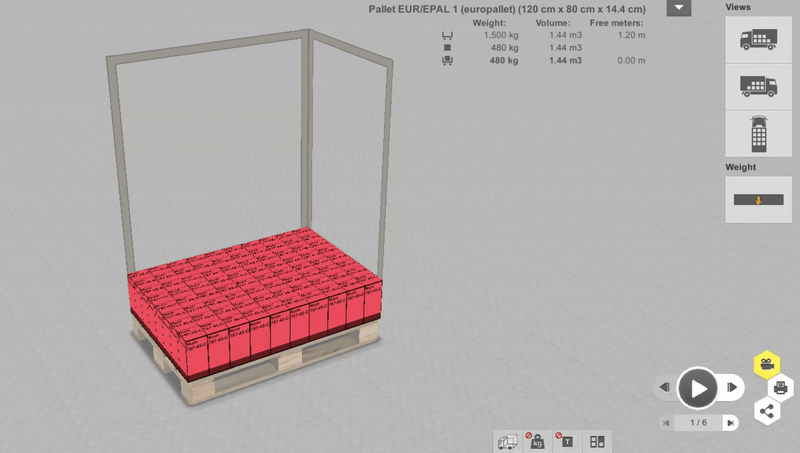
Any forthcoming restrictions are taken into account when loading pallets, such as stackability, tiltability, or maximum pallet load.
Important: the new algorithm only works when loading one type of item (i.e. with the same dimensions, weight, and with the same restrictions). If you want to load different items, you can, but EasyCargo then calculates the resulting plan using a standard algorithm that loads items from the front wall.
How does palletization work?
To give you a better idea, we have prepared a demonstration of how pallet loading works in EasyCargo.
1. Size matters
With slightly different item sizes, you get a very different final plan. Here is an example of loading on a standard EURO pallet, the only difference being the length of the side of the item.
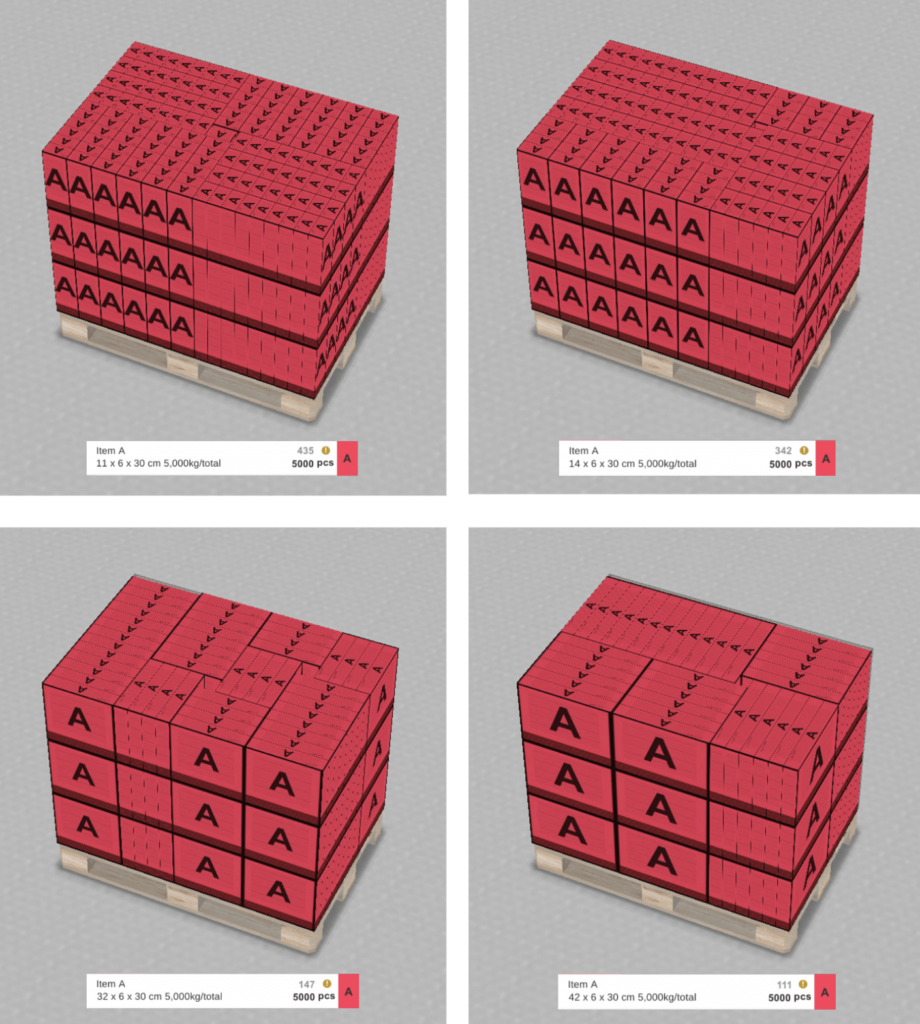
2. Maximum use of space
The algorithm always tries to maximize the compactness of the loaded boxes and at the same time, minimize the occupied space. In the image above, you can also notice how the item is rotated as needed using different loading patterns for the best possible use of space.
When calculating the final plan, the algorithm always looks for better and better ways to load everything. For standard loads, the whole process takes a few seconds, for loads with an extremely large number of items, the whole process can take a bit longer. However, if you don’t want to wait or you are satisfied with the current result, you can stop the calculation at any time.
Loading on several pallets (or other cargo spaces)
Until recently, loading into multiple cargo spaces was only possible by repeatedly creating print reports manually. Now a new and faster option has been added, which is great for loads that don’t fit into one cargo space and you need to load them in several of the same spaces.
When creating a print report, you simply check the „Load remaining items into additional cargo spaces” option and the entire load will be automatically divided into the number of cargo spaces needed.
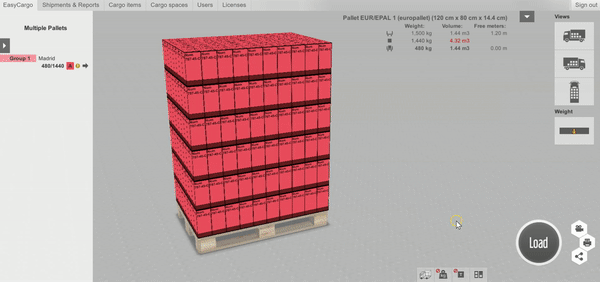
What the new algorithm can’t (yet) do
You can only load one type of item (that is, items of the same size, weight, and restrictions) and each layer is loaded on the pallet in the same way as the previous layers.
Plans for the future
In the future, we want to iron out all the kinks mentioned above. We plan to improve the algorithm so that it can load different types of items and, last but not least, to be able to optimally load loaded pallets into the selected cargo space.
Do you have an idea on how to improve pallet loading to make it even more useful for you? Send us a message!




